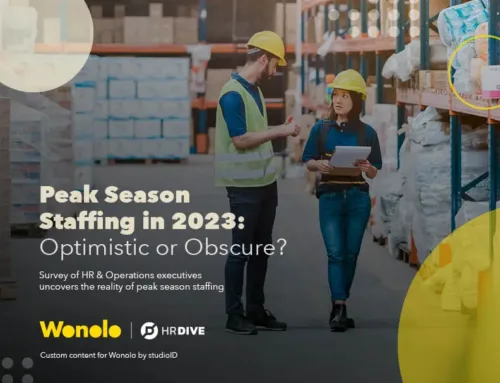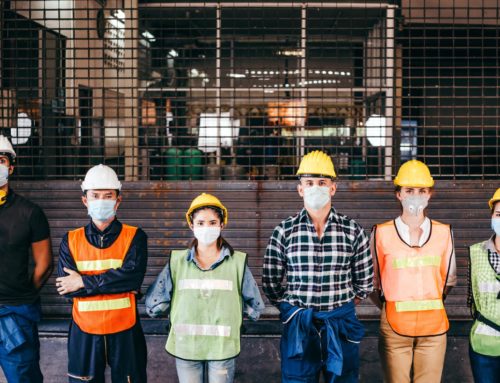Wonolo
For every argument for raising the minimum wage, there’s one against. But both sides would balk at the notion that they don’t care about workers’ rights, that they don’t want workers to be compensated fairly, or that they believe those who work full-time should still struggle to make ends meet and live below the poverty line.
At the crux of the matter is the desire to guarantee good working conditions that don’t exploit workers, and a good flow of jobs that would be a boon to the economy. Both sides want to ensure what they think is best for the country, but disagree about how to achieve that elusive balance.
It’s a debate riddled with vague terms, contrasting priorities, varied outcomes and partisan viewpoints that aren’t likely to shift anytime soon. Though it’s a maze to get through all the arguments, here’s a snippet of its history and a few ways both sides present their points.
Why Do Economists Disagree?
Some economists believe setting a minimum wage clashes with the notion of the free market, in which prices are set according to supply and demand rather than by a federal, state or municipal mandate. The worry is that if the government sets a minimum wage forcing businesses to comply, this would result in a loss of jobs because businesses will try to cut jobs or can’t afford to pay up.
However, this traditional free market economics view on the minimum wage experienced a major disruption in 1993 when a paper published by two Princeton economists argued in favor of the minimum wage. In the paper, David Card and Alan Kreuger studied the impact of an increased minimum wage in New Jersey, concluding that there were no observable changes.
Although this conclusion was met with fierce counterarguments from other economists, Card and Kreuger defended the minimum wage essentially by arguing that the labor market does not operate like the consumer market, in which the market determines the prices for goods. In 2015, Krueger summed up this view in the New York Times:
“While some employers cut jobs in response to a minimum-wage increase, others find that a higher wage floor enables them to fill their vacancies and reduce turnover, which raises employment, even though it eats into their profits. The net effect of all this … is that when it is set at a moderate level, the minimum wage has little or no effect on employment.”
Proponents for the minimum wage say it will have little effect on employment, while those against it say it will have a negative effect on employment. This debate stems from the fact that economists have a hard time predicting employer behavior, as businesses vary widely in how they respond to minimum wage hikes.
Another problem is that it’s difficult to determine how much is too much before employers simply replace low-wage jobs with machines or outsource them to either states with lower minimum wage thresholds or other countries. Opponents fear a minimum wage increase will only ensure that low-wage workers simply lose their jobs.
The Demographic Divide
According to a recent Pew Research Center survey, the majority of Americans support a minimum wage increase. However, a further look at the demographics reveal a deep divide that’s reflected in the country’s partisan politics. This complicates the issue, as it suggests the debate is tied to a broader problem within the society.

Source: Pew Research Center
82% of Clinton supporters also support the $15 minimum wage, while 76% of Trump supporters oppose it. White Americans reject the increase, while Black and Hispanic Americans favor it. Those earning less than $30,000 in income support the hike, while those above the figure are less likely to support it.
There’s an even clearer divide when examining who would actually benefit from the raised minimum wage. In states like California, the $15 minimum wage would mostly benefit Hispanic workers, as well as adults aged 20-54, rather than teenagers. It would also benefit people with a high school education or some college more than those who did not graduate high school.

Source: LA Times
When it comes to national demographics, the typical beneficiary of the minimum wage increase is – in the words of the Economic Policy Institute – a “36-year-old woman with with some college-level coursework who works full-time.” 56% of minimum wage workers are female and 28% have children, most providing 64% of their family’s total income.
Proponents of the minimum wage argue that the raise would increase the standard of living for families with parents who work full-time, and further decrease income inequality across social divides like class, race and gender. Nationwide, the EPI estimates that 40% of African Americans and 34% of Hispanic workers would get a raise if the $15 minimum wage went into effect.
The Moral Question
One of the reasons the debate surrounding minimum wage is so heated is because it’s not all down to simple math. The Governor of California, Jerry Brown, made an interesting remark on this issue when he signed the law in 2016:
“Economically, minimum wages may not make sense. But morally, socially and politically, they make every sense because it binds the community together to make sure parents can take care of their kids.”
As economists argue among themselves whether the minimum wage makes economic sense or not, others also question the moral, social and political responsibility over the issue. Given the income inequality that puts pressure on low-wage workers trying to get by, supporters of the $15 minimum wage argue that it’s important to make sure people earn enough to meet the local cost of living, so that they’re not struggling for basic necessities like food and shelter.
Taking inflation into account, the current federal minimum wage of $7.25 is actually lower than what it was in 1968, when the value peaked at $8.68. Considering how other OECD nations with advanced economies like France, Australia and Canada set their minimum wage, the Economist estimated in 2015 that the U.S. should have a minimum wage around $12, not $7.25.

Source: Pew Research Center

Source: The Economist
If the minimum wage’s purpose is to ensure that all citizens are able to afford basic necessities, the U.S. is failing at the federal level. But opponents of the minimum wage point out that federal interference would put certain businesses at risk, since the cost of living varies widely across regions. A $15 minimum wage would have the adverse effect on low-wage workers by putting them out of jobs as businesses struggle to meet the demands of the law.
Minimum Wage in Moderation
In fact, some “opponents” of the minimum wage aren’t necessarily against the idea of a minimum wage, or even increasing it in certain states or cities where it makes sense. Their main objection comes from the $15 figure which some consider too prohibitive for small businesses in cities with a lower cost of living.
For instance, it may make sense for San Francisco to raise their minimum wage to $15, but doing so in Topeka would put low-wage workers out of work altogether. They say an arbitrary number does more harm than good, and that the minimum must be set according to the local cost of living.
Even among progressives, this issue remains divisive. In the latest presidential election, candidates Hillary Clinton and Bernie Sanders clashed over the exact figure – $12 and $15 respectively – for the federal minimum wage, with the former taking a more cautious stance.
Still others argue that anything less than $15 is unacceptable, as the cost of living will continue to rise and the nation must accommodate for inflation anyway. Some also believe that the mandate would force businesses to combat income inequality and come up with more productive labor models.
As 19 states started 2017 with minimum wage increases and some cities already experiencing rollbacks from states, the ultimate fate of “fight for $15” remains unclear. But as the debate drags on, the current figure may end up losing its meaning. In the end, the fight isn’t so much about an arguably arbitrary figure that’s likely to change in the future anyway, but about a decent living wage for all.
How Wonolo Thinks About Minimum Wage
At Wonolo, we have been purposeful around how we work with minimum wage. Wonolo is an open marketplace where businesses can freely set their own pay and workers operate under a meritocracy. We don’t allow you to post under minimum wage, but otherwise, jobs get filled based on the overall quality of the job – of which pay is a large indicator.
Looking forward, we realize that minimum wages have been stagnant in recent years and that the labor shortage in warehouses means that offering higher wages will attract more qualified workers and we are proponents of a purposeful increase.
We believe in a free market where workers are compensated fairly to make a good living. At the moment, this means a general increase in the baseline overall, but also a wage increase that befits the level of the local economy. When on-demand workers look for jobs, higher wages will continue to be the decisive factor in choosing a job. Businesses need help understanding what the right wage level is and local minimum wages can help simplify compensation decisions.


![[Report] Beyond the Gig: Exploring Reliable Work Options for the Modern Workforce](https://info.wonolo.com/wp-content/uploads/2023/10/Worker-Preferences-Report-Header-Image-500x383.png)



